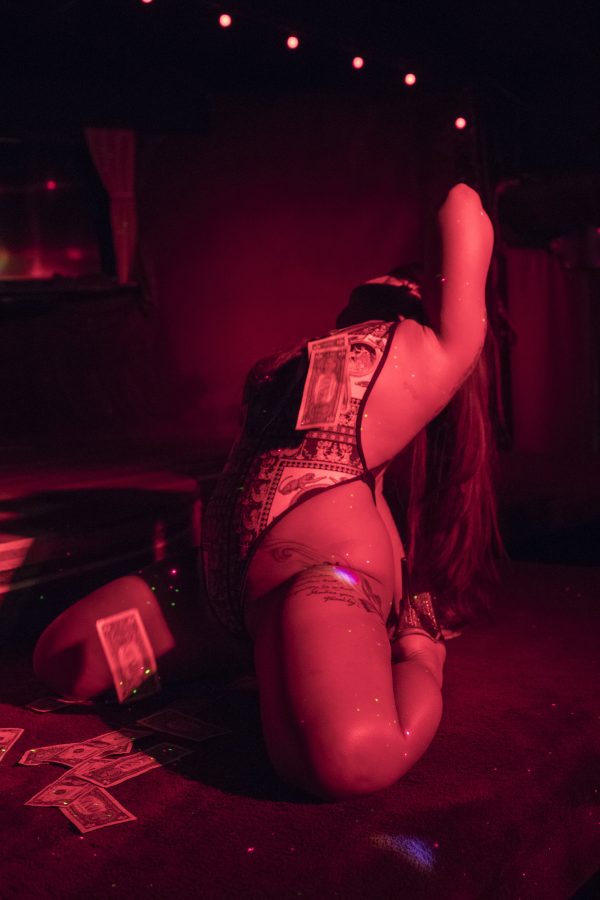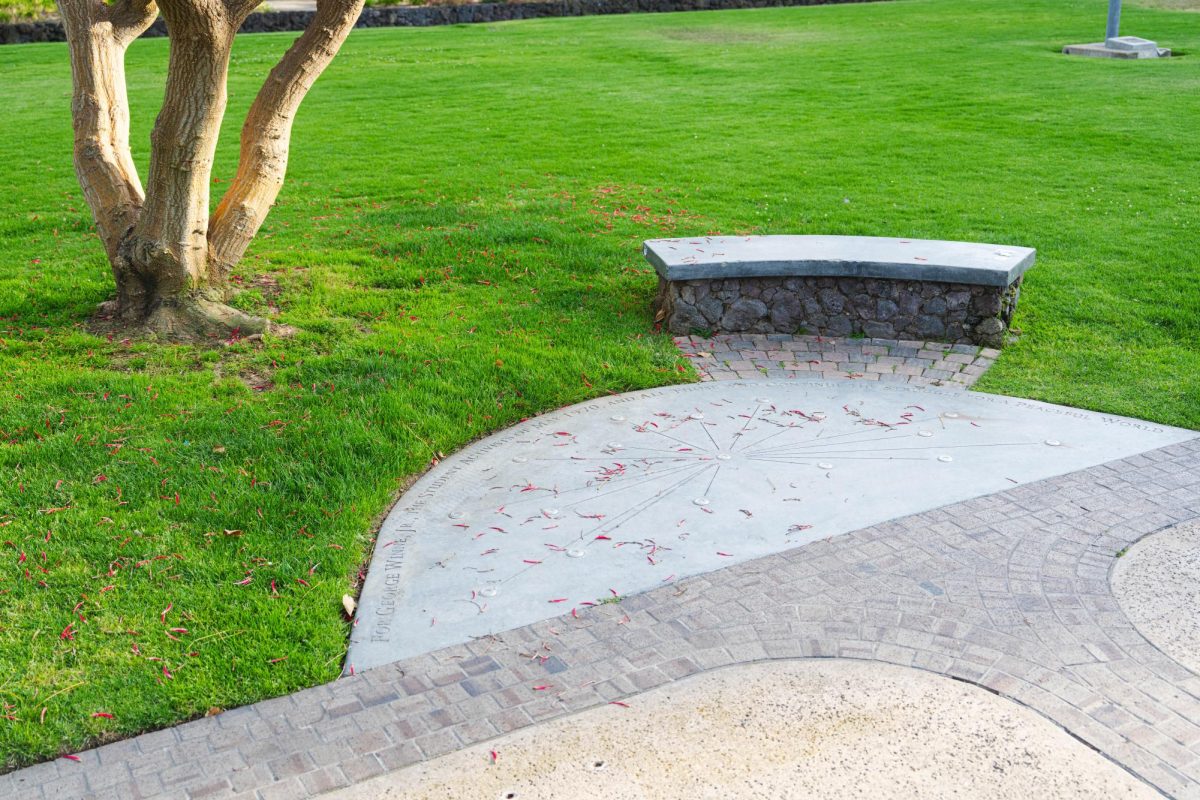Photo Editor Francesca Hummler captures the strip club in all of its bare, neon-lit glory, questioning how gender, agency, and sexuality operate within the space.
Strip clubs — an experience I have always wanted. I remember how the freshmen escapades of my male friends were exclusive. They were never willing to let me tag along across the border to Tijuana locales like the strip club, Hong Kong. As a photographer captivated by exploring harshly gendered areas, I recently set out to find a strip club in San Diego willing to work with me on a long-term photo project. After years of denials and delays, my first shoot for the project would also be my first time stepping foot into a club.
I was meeting with Jewels for the first time, a warm and welcoming woman who works as a stripper at Les Girls in the Midway district. Jewels spoke about how the club is not only one of the oldest in the county, but also one of the few that is female-owned and operated. I learned a lot about the business of stripping — discovering that many clubs have hundreds of girls on staff and charge them a flat rate to perform every night, keeping a portion of their tips in return for the privilege to perform. However, Les Girls, being much more employee-friendly, pays each performer a base of $40 per night, has a live female DJ instead of the Spotify playlists running other clubs, and gives the strippers agency over the song choices. Strippers may have a stage, but they can’t always express their voices.
Les Girls chips away at these confines. The rapport between the performers in the dressing room was positive and encouraging, setting the casual tone for our photo shoot. I instructed Jewels to pretend the camera wasn’t there and perform as usual. Having danced traditional ballet for over a decade, I’m prone to giving dancers tough criticism — so when I say I was impressed by these women, I mean it. I’m all too familiar with trying to make the challenging and painful look graceful. Watching Jewels fly around the pole, land splits, and strip to the beat of the music all while in eight inch heels reinforced how unbelievably strong and underappreciated women are.
I wanted to clap uncontrollably when her set ended, but the men around the room looked beyond bored.
Even stripping, an expression of female agency and powerful sexuality at its core, seemed dampened yet again by the male psyche.
After driving back home, gushing all the while to my boyfriend about how unbelievable the performance had been, I did some further research on Les Girls.
I discovered that six months ago, The Rock Church had bought out the strip club next to Les Girls and harassed the owner to give in and sell her property as well. During an interview segment with the head male pastor, he made sure to stress how the church wanted to help girls escape “this kind of lifestyle.” For me, the central issue surrounding stripping lies in this statement. Instead of respecting and admiring strippers for their talent, we shame them — even when celebrities’ songs on the radio are just as sexually explicit. It’s time that women themselves choose how they are represented. The public, Christians in particular, should support them in their choice.
Leaning against a porch post with the neon light from the “Theater Nude” sign reflected in her eyes, Jewels told me how going out is expensive and has all too often led to unwelcome strangers’ hands grabbing at her. So Jewels took back control, making money while performing high above others on stage instead of getting groped without permission in a club. At Les Girls, she’s finally in charge, and for the customers there is a “don’t touch, only look” policy. I think that every college-aged girl in San Diego should visit a strip club, as it demonstrates human intimacy and gender power dynamics much more clearly in a safer environment than the gropes and grabs of your local campus or frat party.
Read more:
What the Sighted Don’t See
A Triton is Born
Inside Tijuana’s Migrant Shelters
Photos courtesy of Francesca Hummler, Photo Editor.








